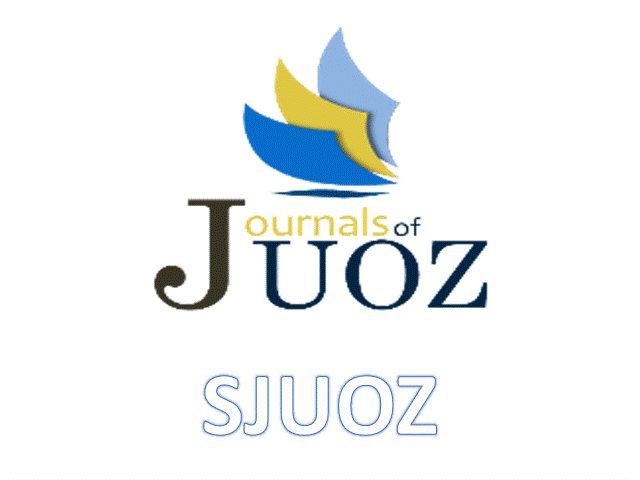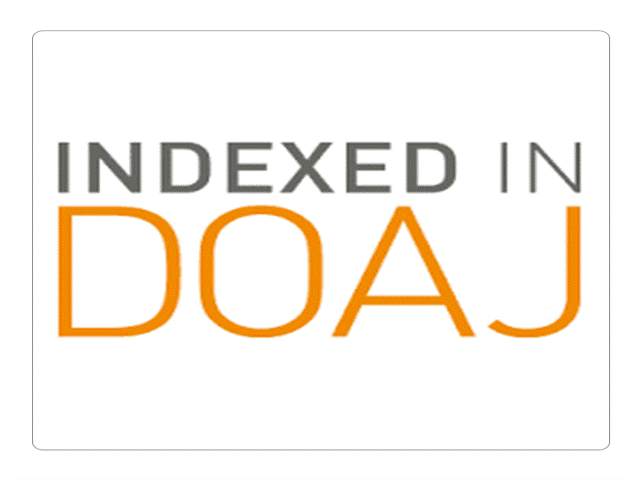Diversity of Microfungi in Litter of Pine Forests in Duhok
Keywords:
Litter fungi, Forests, IraqAbstract
The litter microfungi of Pine forests located in Zawita and Atrush were studied with objective to compare the composition, frequency of occurrence and diversity of fungi in forest habitats from Duhok, Kurdistan region of Iraq. A total of 11 species in addition to sterile mycelia were identified from L1 litter layer from the two sites, whereas, 9 species were identified from L2 layer at both sites. In general, the detected species from both litter layers (L1,L2) at the two sites included: Aspergillus flavus, A.fumigatus, A.niger, Alternaria alternata, Aurobasidium pullulans, Cladosporium cladosporoides, C.gallicola, Fusarium sp., Papulaspora pallidulla, Penicillium glabrum, Rhizopus sp. Scytalidium lignicola,Ulocladium atrum in addition to non-sporulating mycelia. Of these A.pullulans was the most frequent species on freshly and decomposed pine needles litter at the two sites. The least (SI) index for fungal community inhabiting Pine litter was recorded between L1 and L2 layers at Zawita. Whereas, the highest (SI) was found between L1 layer at Atrush and L2 layer at Zawita site. Papulaspora pallidulla represents a first record for Iraqi mycobiota. Brief description along with photographs are provided for the newly reported species.
Downloads
References
Body, H. and Watkinson, S.C. (1995).Wood decomposition, higher fungi and their role in nutrient redistribution. Can. J. Bot. 73: 51377-51383.
Botella, L., Santumaria, O., and Diez, J.J, (2010). Fungi associated with the decline of Pinushalepensis in Spain. Fungal Diversity 40: 1- 11.
Davey, M.L., Tsuneda, A. and Currah, R.S. (2008). Evidence that the gemmae of Papulaspora sepedonioidesare neotenous perithecia in the Melanosporales .Mycologia 100:626-635.
Dickinson, C.H. and Pugh, C.F.F. (1974). Biology of plant litter decomposition vol. 2 London, Academic Press Dobranik, J.K. (1999). A microtiter plate procedure for evaluatingfungal functional diversity Mycologia 91: 756-765
Domsch, K.H., Gams, W. and Anderson, T.H. (1980). Compendium of soil fungi.Academic press, New York.
Ellis, M.B. (1971). Dematiaceous hyphomycetes Commonwealth Mycological Institute, Kew, Surrey, U.K
Hattenschwiler, S.; Tiunov, A.V. and Scheu, S. (2005). Biodiversity and litter decomposition in terrestrial ecosystem.Annu. Rev. Ecol. Evol.Syst. 36: 191-218.
Hayes, A.J. (1965). Some microfungi from scot pine litter. Trans. Br.Mycol. Soc.48:179-185.
Hotson, J.W. (1912). Culture studies of fungi producing bulbils and similar propagative bodies. Prooc. Am. Acad. Art. Sci. 48: 227-306.
Hudson, H.J. (1977). Fungal saprophytism.Studies in Biology .No.32. Edward Arnold, U.K.
Kendrick, W.B. and Burges, A. (1962). Biological aspects of the decay of Pinus sylvestris leaf litter. Nova Hedwigia 4: 313-342.
Kirk, P.M.; Cannon, P.F.; David, J.C and Stapler, J.A. (2001).
Ainsworth and Bisby s Dictionary of Fungi.CABI BioscienceU.K Klich, M.A. (2002).Idemtification of common Aspergillus species.
CBS, Ultrecht, the Netherlands.Koukol, O. (2011). Early spring mycobiota of Pine litter needles.
Czech Mycology 63; 153-161.Pausas, J.G. (1997). Litter Fall and litter decomposition in Pinus sylvestris forests of the eastern Pyrenees. J. Veg. Sci. 8: 643-650
Petrini, O. (1991) Fungi endophytes of tree leaves. In Andrews, J.H,Herano, S.S. (eds.) Microbial ecology of leaves, Springer, N.Y.
Preuss, C.G. (1851) Papulaspora Preuss In; Deutschlsnd Flora vol. 6, p89-96.
Rattan, S.S; and Abdullah, S.K. (1976). Studies on the wood rot fungi of Iraq. Indian Phytopathology 29: 296-302.
Rattan, S.S.; Abdullah, S.k and Ismail.A.L.S. (1978) Studies on the fungi causing diseases and decays of trees in Iraq. Nova Hedwigia29: 765-779.
Shadomy, H. Jand Dixon, D.M. (1989). A new Papulasporaspecies from the infected eyes of a horse: Papulaspora equi .sp.nov. Mycopathology 106:35-39.
Shahbaz, S.E. (2007) Pinales with a field guide to the trees and shrubs of Kurdistan region of Iraq. Spriez-press and publisher, Duhok, Iraq
Shanthi, S. and Vittal, B.P.R. (2010) Fungi associated with decomposing leaf liter of Cashew (Anacadium occidentale). Mycology 1: 121-129
Sorenson, T. (1948). A method of establishing group off equal amplitude in plant sociology based on similarity of species contentand its application to analysis of the vegetation on Danish commens.
Biologiske Skitter KongligeDanskeVideskabernesSelskab 5: 1-34.
Tokumasu,S. (1980). Observations on the fungus flora in Pine leaf litter. Ecology of Microorganisms 7: 129-144
Tokumasu,S. and Aoiki, T. (2002) A new approach to study microfungal succession on decaying pine needle in an oceanic subtropical region in Japan Fungal Diversity, 10: 167- 183.
Townsend, C.C. and Guest, E. (1966). Flora of Iraq. Vol.I. Ministryof Agriculture and Agrarian Reform Bagdad, Iraq.
Virzo DeSanto , A. , Rutigliano , FA. , Berg , B., Fioretto, Puppi , G. and Alfani, A. (2002). Fungal microbiota and decomposition of needle litter in three contrasting coniferous
forests ActaOecol. 23 : 247:259.
Warren, J.R,(1984) An undesired species of Papulaspora on Rhizoctonia solani. Mycologia 40:391-401.
Watanabe, T. (2002).Pictorial Atlas of soil and seed fungi.Morphologies of cultured Fungi and Key to species.2nd edition,CRC press. London.
Weresub, l.K and Le Clair, P.M. (1971).On Papulaspora and bulbilliferous basidiomycetes Burgoa and Minimiduza. Can. J. Bot.49:2203-2213.
Zamora, P. , Martinez – Ruiz, C. and Diez , J.J. (2008) Fungi in needles and twigs of pine plantation from Northern Spain. Fungal Diversity 30:171-184.
Downloads
Published
How to Cite
Issue
Section
License
Copyright (c) 2013 LAVA HIKMAT NASHAT, SAMIR KHALAF ABDULLAH

This work is licensed under a Creative Commons Attribution 4.0 International License.
Authors who publish with this journal agree to the following terms:
- Authors retain copyright and grant the journal right of first publication with the work simultaneously licensed under a Creative Commons Attribution License [CC BY-NC-SA 4.0] that allows others to share the work with an acknowledgment of the work's authorship and initial publication in this journal.
- Authors are able to enter into separate, additional contractual arrangements for the non-exclusive distribution of the journal's published version of the work, with an acknowledgment of its initial publication in this journal.
- Authors are permitted and encouraged to post their work online.








